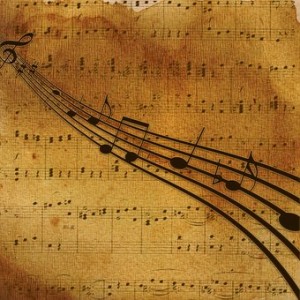Classical Gas is one of the most requested and most familiar instrumental pieces of all time. This tune is always asked for whenever a bunch of people and a nylon string acoustic guitar are in the same room. Even though it is not a great technical showcase for fingerstyle guitarists, it is a great vehicle to show off the sound of the classical guitar.
Classical Gas, released into the world in 1968, was a song that The Doors prevented from turning into a number one hit; but, it remained in the second place for two weeks. Today, it is still among the most familiar tunes of all time and, along with The Anonymous Romance and Lecuona’s Malaguena, regarded as an essential element of the classical guitar repertoire. Moreover, nobody can say why.
The impact of Classical Gas is way more than the sum of its parts. There are very few musical ideas in this composition. It is mainly repetition of a theme made up of a few notes. There are a few parts that are unforgettable “surprises” making use of syncopation, scales, strums, and rough time signature changes. Somehow all the bits link together like pearls on a necklace, and the final note adds a sublime resolution.
The composer, Mason Williams, states on his website, “I did not have any big plans for it, other than maybe to have a piece to play at parties when they passed the guitar around. I envisioned it as simply repertoire or “fuel” for the classical guitar, so I called it Classical Gasoline.” Mason Williams’ day job was as a comedy writer and stand-up comedian who had lots of other projects besides writing a classical guitar instrumental.
It was Mason Williams’ work on the Smothers Brothers’ “Comedy Hour” which gave him the opportunity to have his pet composition heard by the American public. The original score of the piece shows only chords and a few notes. Mason Williams had a twenty-three-year-old composer named Mike Post finish off the arrangement.
At the Grammys, it won Best Instrumental Composition and Best Instrumental Performance for Mason Williams and Best Instrumental Arrangement for Mike Post who has had a career full of triumphs in the field of TV theme music. Among his achievements as a television, theme composer include the theme(s) of Law And Order, The A-Team, and the Rockford Files.
Classical Gas has been employed as the theme music for several news programs, the background music for the Apollo 4 movie, and featured in some other films and TV shows. Many people have mistakenly attributed Mason Williams’ solo version of the tune for a cover by Eric Clapton.
Classical Gas is an easy piece to play; the challenge is to play it with passion and dynamics because it appears to non-guitarists, more challenging to play than it is. Maybe this is the reason it is among the most requested guitar pieces ever.

look inside |
Classical Gas
By Mason Williams. Piano Solo; Solo. Pop. Performance part. With chord names. 5 pages. Published by Alfred Music (AP.3708CSMT). |

look inside |
Classical Gas
Guitar TAB. Composed by Mason Williams. This edition: Guitar TAB. Artist/Personality; Guitar Personality; Guitar TAB. Pop, Classical and Play Along. Guitar tablature songbook and accompaniment CD. With guitar tablature, standard notation, vocal melody, lyrics, chord names and guitar chord diagrams. 176 pages. Published by Alfred Music (AP.P0961GTA). |

look inside |
Classical Gas
Drill Design 68/12. Arrangers’ Publ Drill Books. 24 pages. Arrangers’ Publishing Company #D620. Published by Arrangers’ Publishing Company (HL.40001744). |

look inside |
Classical Gas
Drill Design 83/12. Arrangers’ Publ Drill Books. 28 pages. Arrangers’ Publishing Company #D621. Published by Arrangers’ Publishing Company (HL.40001745). |








